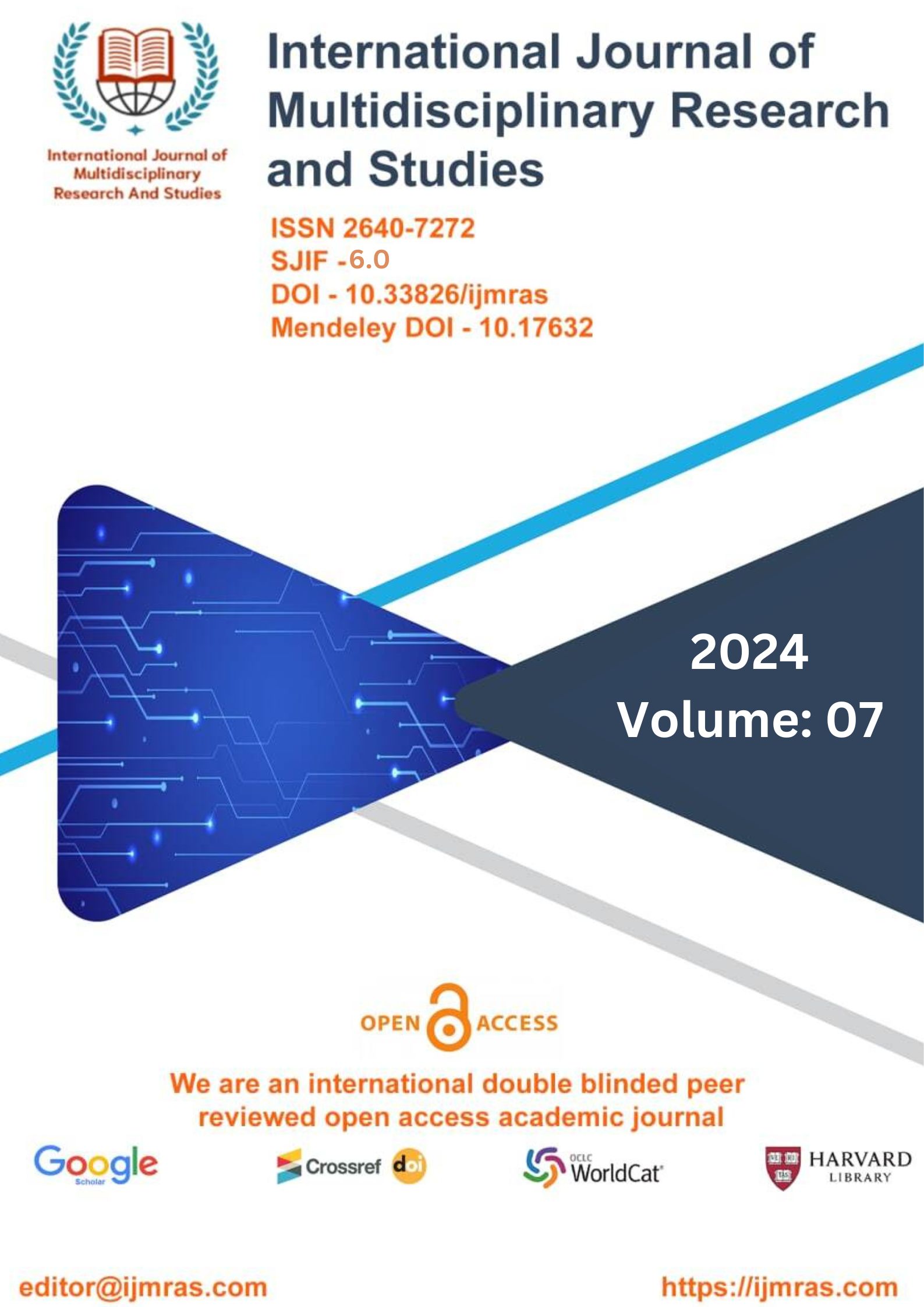Green Loans, Improved Risk Management, and Expanded Business Opportunities in China: A Case Study of Financial Institutions

Abstract
Mandatory reporting requirements for green loans made by Chinese banks have been set up, and the infrastructure for conducting green finance operations has been built. China's Green Credit Policy is what's really getting things moving in the green finance sector in the country. China's Green Credit Policy is a leading empirical example of green finance due to its massive scale (8.08 trillion RMB) and numerous participants. Another great thing about the Green Loans Policy is that all the major Chinese banks use the same standards when issuing green loans. Since the CBRC assessed the bank's Green Credit Policy in 2013, its performance may be directly compared to that of other banks. Others may learn from the mistakes made by China's government with its Green Credit Policy.
Western financial organisations have a number of approaches when it comes to green finance. Western bank regulators do not often mandate that their institutions engage in environmentally friendly financing strategies. In contrast to the lack of standardizations in green finance, China's Green Credit Policy includes both established and emergent procedures. The definition of "green financing" is not universally accepted, even among Western institutions.
There are just too many interchangeable phrases that may be used in its place (discussed in section 2.1). While the UNEP, EP, and UNGC guidelines all contribute toward establishing a foundation for green finance, they do nothing to foster its development.
When it comes to green financing, Western banks are led by the knowledge of their decision-makers in areas like sustainable development and corporate social responsibility, whereas in China, green financing is led by government mandates. Regardless of the motivations of China's policymakers, the country's green financing sector grew from zero to 8.08 trillion RMB in 2015. The rapid expansion of green financing suggests that financial institutions are responding favorably to incentives.
Keywords
Credit Policy, , Financial Institutions, , Sustainable DevelopmentHow to Cite
References
Adkins, R., & Paxson, D. (2016). Subsidies for renewable energy facilities under uncertainty. TheManchesterSchool, 84(2),222-250.
Aerts, W., Cormier, D., & Magnan, M. (2008). Corporate environmental disclosure, financial marketsandthemedia:Aninternational perspective.Ecological Economics,64(3),643-659.
Aizawa, M., & Yang, C. (2010). Green Credit, Green Stimulus, Green Revolution? China’sMobilization of Banks for Environmental Cleanup. The Journal of Environment &Development,19(2), 119-144.
Allison,Paul.(2009). FixedEffectsRegressionModels.Sagepublications.
An, W. (2008). Lv se jin rong de nei han, ji li, he shi jian chu tan. [A probe into the connotation,mechanismand practice ofgreen finance].Economic Survey, 5049.
Anderson, E., & Sullivan, M. (1993). The antecedents and consequences of customer satisfaction forfirms. Marketing Science, 12, 125–143.
Basmann, R. (1957). A Generalized Classical Method of Linear Estimation of Coefficients in aStructuralEquation.Econometrica,25(1), 77-83.
Bauer, R., & Hann, D. (2010). Corporate environmental management and credit risk. ECCE WorkingPaper.UniversityMaastricht:The EuropeanCentrefor CorporateEngagement.
Berger, A., & DeYoung, R. (1997). Problem loans and cost efficiency in commercial banks. Journalof Bankingand Finance, 21(6), 849-870.
Berge, T.O., & Boye, K.G. (2007). An analysis of bank’s problem loans. Norges Bank EconomicBulletin 78, 65–76.
Boden, T.A., Marland, G., and Andres, R.J. (2017). National CO2 Emissions from Fossil-FuelBurning, Cement Manufacture, and Gas Flaring: 1751-2014, Carbon Dioxide InformationAnalysis Center, Oak Ridge National Laboratory, U.S. Department of Energy. Doi10.3334/CDIAC/00001_V2017.
Breusch, T. S., & Pagan, A. R. (1979). A Simple Test for Heteroscedasticity and Random CoefficientVariation.Econometrica, 47(5),1287-1294. Doi:10.2307/1911963.
Brundtland, G.H. (1987). Our common future. Oxford: Oxford University Press.Buxton,A.(1997).Businessethics: gettingontherighttrack.CIBNews,February,1–4.
Cai, H. (2015). Xin chang tai xia wo guo lv se xin dai fa zhan lu jing you hua. [The optimization ofChina’s Green Credit Policy development path under the “new normal”]. Finance and accountingmonthly,2015, 5.
Caouette,J.B.,Altman,E.I.,&Narayanan,P.(1998).Managingcreditrisk:thenext great financialchallenge (Vol.2).JohnWiley&Sons.
Case,P.(1996).Land, lendingandliability.CharteredBanker2(4),44–49.
CBRC. (2012). Notice of the CBRC on Issuing the Green Credit Guidelines. Retrieved fromhttp://www.cbrc.gov.cn/EngdocView.do?docID=3CE646AB629B46B9B533B1D8D9FF8C4A
CBRC. (2014). Notice of the China Banking Regulatory Commission on Key Performance Indicatorsof Green Credit Implementation. General Office of the China Banking Regulatory CommissionDocument,2014, 186.
CBRC. (2016). Yin hang ye lv se xin dai zhu li jing ji jie gou tiao zheng he chan ye zhuan xing shengji. [Green Credit in helping the adjustment of economic structure and the upgrade in industrytransformation]. CBRCpressrelease, 2016 September2nd.
Hempel G.H., Colema, A.B., & Simonson, D.G. (1990). Bank Management. Wiley: New York.
Höhne, N., Khosla, S., Fekete, H. & Gilbert, A. (2012). Mapping of green finance delivered by IDFC members in 2011, Cologne: Ecofys.
Hu, N., & Cao, D. (2011). Lv se xin dai yu shang ye yin hang huan jing feng xian guan li. [Green- Credit Policy and Environmental Risk Management of Commercial Banks]. On Economic Problems, 3: 103-107
Iannotta, G., Nocera, N., & Sironi, A. (2007). Ownership structure, risk and performance in the European banking industry. Journal of Banking and Finance, 31(7), 2127-2149.
Jakubík, P. & Reininger, T. (2013). Determinants of nonperforming loans in Central, Eastern and Southeastern Europe. Focus on European Economic Integration, 3, 48-66.
Jeucken, M. (2001). Sustainable finance and banking: The financial sector and the future of the planet. London; Sterling, VA: Earthscan Publications.
Jia, C. (2009). The effect of ownership on the prudential behaviour of banks – the case of China.Journal of Banking and Finance 33, 77–87.
Kahane, L. H. (2007). Regression basics: Sage publications.
Keele, D., & DeHart, S. (2011). Partners of USEPA Climate Leaders: An Event Study on Stock Performance. Business Strategy and the Environment, 20(8), 485-497.
License
Copyright (c) 2024 HU JINGNAN, DR THILLAISUNDARAM, DR. SYED

This work is licensed under a Creative Commons Attribution 4.0 International License.
Individual articles are published Open Access under the Creative Commons Licence: CC-BY 4.0.



